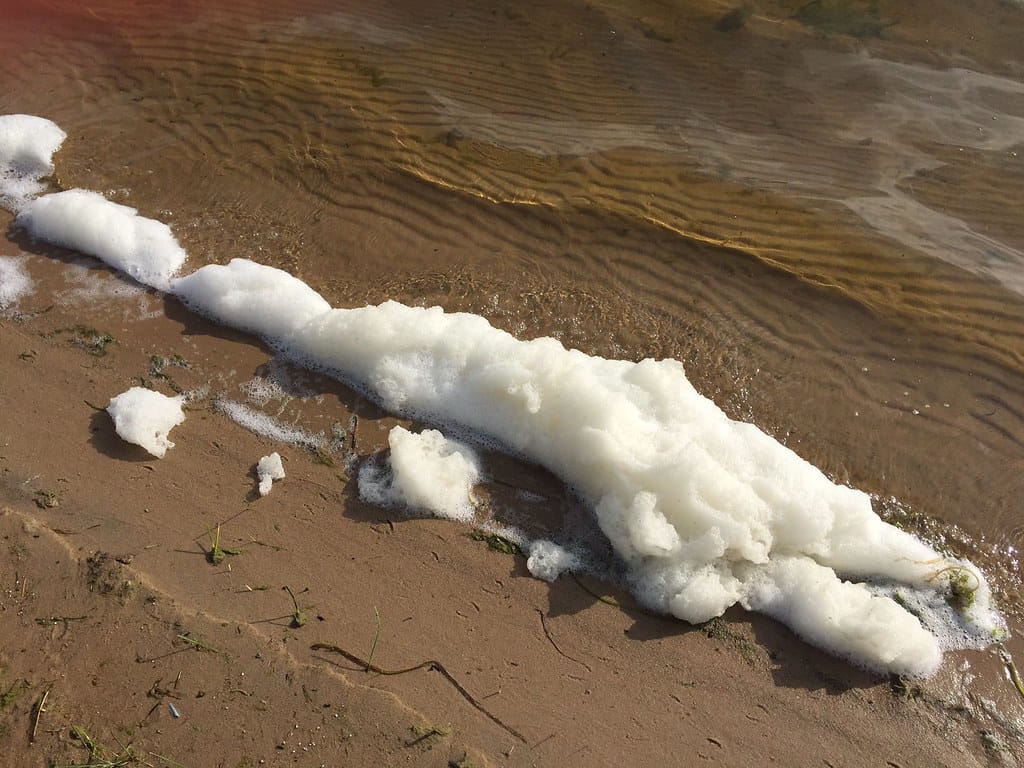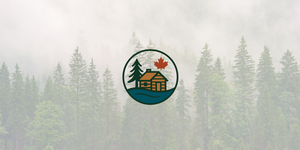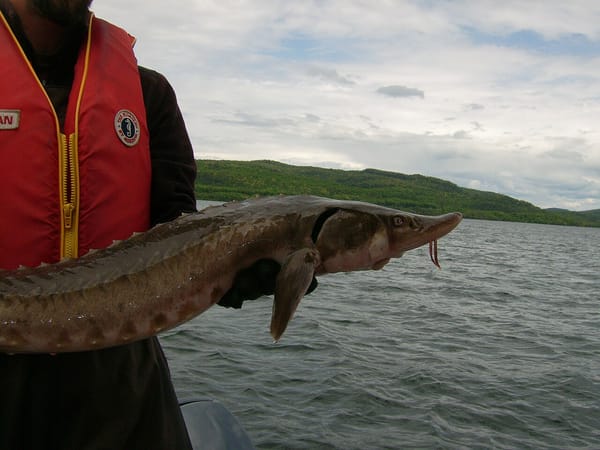If you've spotted thick foam washing up on your shoreline, you're witnessing one of nature's most misunderstood phenomena. It seems somewhat alarming - and unnatural perhaps. However, it turns out there's a relatively simple answer to what it is, where it comes from, and what you should do. Read on!
The science behind the suds
Lake foam forms through a surprisingly simple process. When organic matter like leaves, algae, and aquatic plants decompose, they release natural compounds called surfactants - basically, nature's soap. These dissolved organic carbon compounds (DOCs) reduce water's surface tension, allowing bubbles to form and turn into foam when waves crash against the shore or wind churns the water's surface.

It's not to far off from another familiar lake experience: shaking a bottle of beer. The proteins and organic compounds act as foam stabilizers, creating bubbles that stick together. In lakes, this process intensifies when dissolved organic matter concentrates near the surface and physical agitation from wind and waves "whips" it into foam.
Peak foam seasons
Lake foam is most prominent during spring and fall. During these seasonal transitions, lakes naturally mix from top to bottom, bringing nutrient-rich water and decomposed organic matter from the lake bed to the surface. Add some wind and wave action, and you've got perfect foam-forming conditions.

Spring snowmelt and autumn leaf fall contribute additional organic matter, while temperature changes drive the mixing process. Summer can also produce foam, particularly during algal blooms in warm, nutrient-rich waters.

Saskatchewan's Foam Lake, named by settlers in 1882 for its persistent froth, exemplifies how some Canadian lakes are naturally prone to foam formation due to their shallow depths and high organic content.
When foam signals trouble
While most lake foam is natural and relatively harmless, certain types warrant caution. Natural foam typically appears off-white to brown, smells earthy or fishy, and breaks apart easily when disturbed. However, foam can concentrate contaminants at levels significantly higher than the surrounding water.
Recent research has revealed that foam can accumulate PFAS "forever chemicals" at concentrations up to 70 times higher than in the water itself. During harmful algal blooms, increasingly common in lakes across Alberta, Ontario, and Quebec, foam may contain dangerous levels of microcystin toxins that can cause skin irritation, gastrointestinal illness, or even liver damage.

Artificial foam from detergents appears bright white, smells perfumy, feels slippery, and persists longer than natural foam. If you notice unusually white, stiff foam that piles up like shaving cream and doesn't break down easily, it may indicate PFAS contamination, a particular concern near airports, military bases, or industrial areas.
The algae connection
Blue-green algae (cyanobacteria) play a starring role in foam production. These organisms - though not actually algae - produce polysaccharides (long chains of sugars) that act like industrial foam stabilizers. When algae bloom and die, they release these compounds along with proteins and lipids that further enhance foam formation.

The 2007 Quebec blue-green algae crisis, which affected nearly 50 lakes and led to water bans for 12,000 people, demonstrated how foam can serve as a visible indicator of more serious water quality issues. Today, Alberta monitors six lakes using satellite technology to track algal blooms and predict foam events, while Saskatchewan performs testing at most popular recreational lakes on a near weekly basis during the summer.
What lakegoers can do
The most important advice? Avoid all contact with foam, regardless of its appearance. Keep children and pets away - dogs are particularly vulnerable to algal toxins concentrated in foam. If contact occurs, rinse immediately with clean water.

If you observe unusual foam - that is, foam that is bright white, chemical-smelling, and with dead fish nearby - document it with photos and report it to your provincial environment ministry. Canadian environmental agencies recognize foam as an important indicator of water quality and potential contamination.
Now you know

While seemingly out-of-place on the shore of your favourite lake, you're now better informed that lake foam is most likely the result of a natural process - nature's soap. You now know to avoid it, as it can concentrate toxins like from blue-green algae. And, you're more aware of red flags for environmental concerns, making you a better steward of the lakes we all share.
While that sudsy accumulation on your shore might not make for the most Instagram-worthy #lakelife moment, it's usually just your lake doing what lakes do—breaking down organic matter and responding to the rhythms of the seasons.
Your lake's foam? Nothing more than nature's seasonal reminder of the complex ecosystem beneath those waves.






Join the Conversation